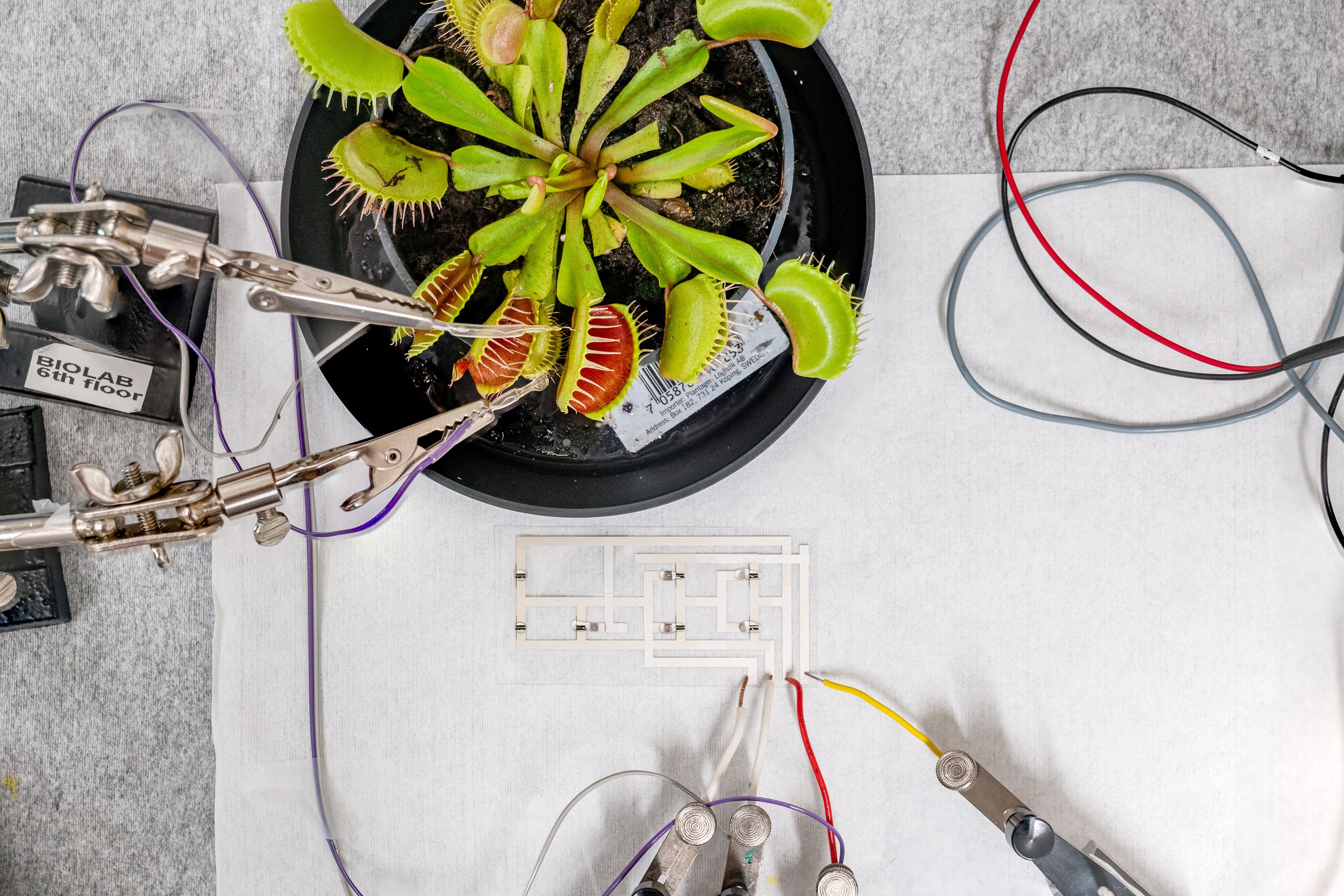When a Venus flytrap snaps its fleshy lobes around an unsuspecting insect, it’s game over for the prey. The plant’s unusual habit of snacking on animals has captured the imagination of people ranging from Charles Darwin to playwright Howard Ashman and composer Alan Menken (the latter two created the 1982 musical Little Shop of Horrors, which stars a human-eating plant). Now, in an experiment that might seem straight out of a pulp science-fiction novel, scientists have harnessed the flytrap’s power for themselves: they have developed a method to trigger its trap using soft, semi-organic artificial neurons.
“The overarching goal of our research is to try to develop devices that can mimic the functioning of building blocks in our body,” says study co-author Simone Fabiano, an organic nanoelectronics researcher at Linköping University in Sweden. The Venus flytrap provides an efficient testing ground for an interface between living creatures and electronics that, Fabiano and his team hope, may one day lead to fully integrated biosensors for monitoring human health—or a better interface for people to control advanced prostheses with their nerves. The results were published in Nature Communications last week.
This is not the first time scientists have controlled a Venus flytrap. Alexander Volkov of Oakwood University has been researching plant electrophysiology—and specifically Venus flytraps—for decades. In 2007 he and his lab hooked up silver wires to a flytrap’s snapping mechanism and ran an electrical current through the system, causing the lobes to clamp shut.
Such experiments work because the motion is controlled by an apparatus similar to an animal’s nervous system. In the flytrap, the phloem—the tissue that transports nutrients through a plant—contains ion channels through which charged particles can flow. This triggers the plant’s lobes to close, similar to the way electrical charge flows along an animal’s nerves to send commands to its muscles. But there are some key differences between the two systems. “In Venus flytraps, calcium mitigates the [electrical] response, whereas in animals, it’s usually sodium,” says Swetha Murthy, a biochemist at Oregon Health & Science University, who also works with Venus flytraps but was not involved in the new study. Additionally, the plant’s membranes are hyperpolarized, compared with animal neurons. This means scientists have to use extra current to induce a reaction in the Venus flytrap. They do so by incorporating charged chloride ions into their electronic device.

Despite these differences, a Venus flytrap’s ion channel serves as a good model for testing nerve activity, thanks to the channel’s size. “It’s easy to measure in experiments,” Volkov says. And the trap’s big, clamshell-like closing motion is an obvious sign that the signal has gotten through. Plus, there are fewer ethical considerations when it comes to using plants, as opposed to animals, in the lab.
To make their flytrap close, Fabiano and his colleagues constructed a neuronlike electronic device. They began by screen printing carbon and silver chloride electrodes onto a polyester base. “It’s what you use for printing labels on T-shirts,” Fabiano explains. “It’s a very, very simple way of making electronics.” Next they attached the electrodes to the lobes and midrib (or crease) of the plant’s trap and ran a current through the system—first at a high frequency and then at a lower one. They found the high frequency triggered a quick response, but the low frequency was not enough to close the trap.
This setup was somewhat similar to Volkov’s original work and previous research involving artificial neurons but differed in a couple of crucial ways. For one thing, it did not use silicon, a rigid and relatively expensive component of most other artificial neurons. And unlike earlier Venus flytrap studies, it mimicked the structure of an actual neuron by including a tiny gap across which ions can jump (known as a synapse in a real nerve cell) within the screen-printed electrodes.
Although he sees his team’s results as encouraging, Fabiano acknowledges that the system is not yet ready to interface with human cells. “We still have a couple of orders of magnitude before we get to the energy efficiency of our biological neurons,” he says. Once the artificial neuron becomes more efficient, he thinks this technology could potentially be used to establish a link between a person’s signaling nerves and an artificial limb, allowing for seamless prosthetic control.
Volkov is not convinced the new research represents a true breakthrough. Many researchers have designed systems to interface with plants, he says. “Some people have closed Venus flytraps by smartphone,” Volkov adds. Given the difference in plant and animal physiology, he is uncertain the system could translate to real neurons controlling an external device.
Murthy is more optimistic. “I think this study provides strong potential to develop and integrate implantable devices as biosensors,” she says. “It’s a proof-of-principle experiment.”
